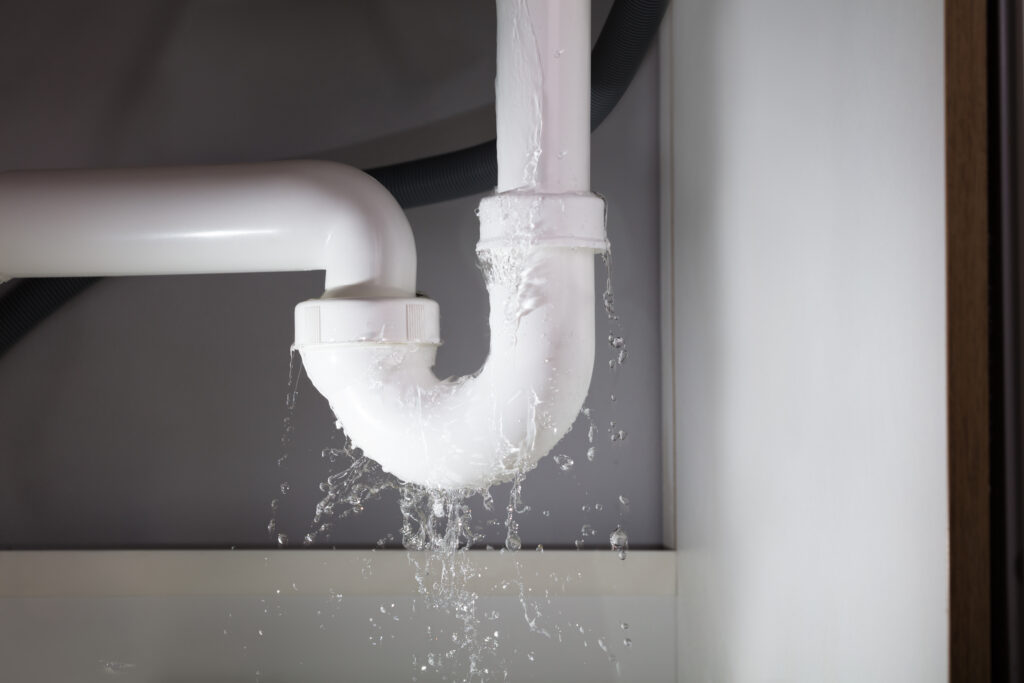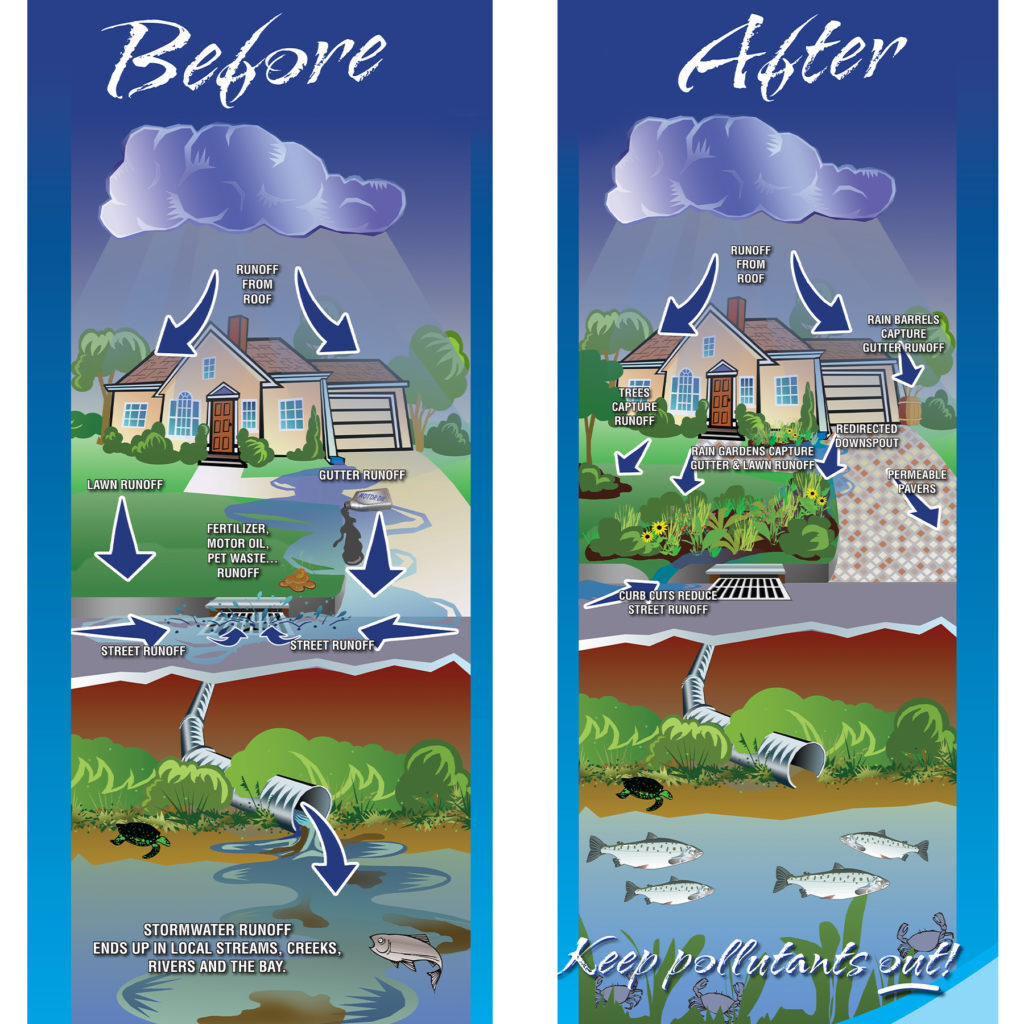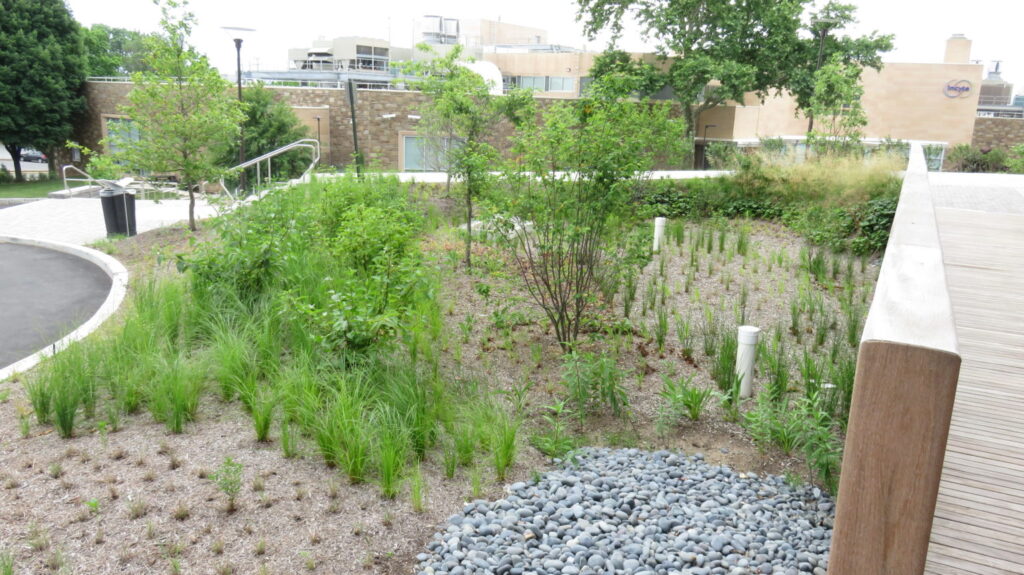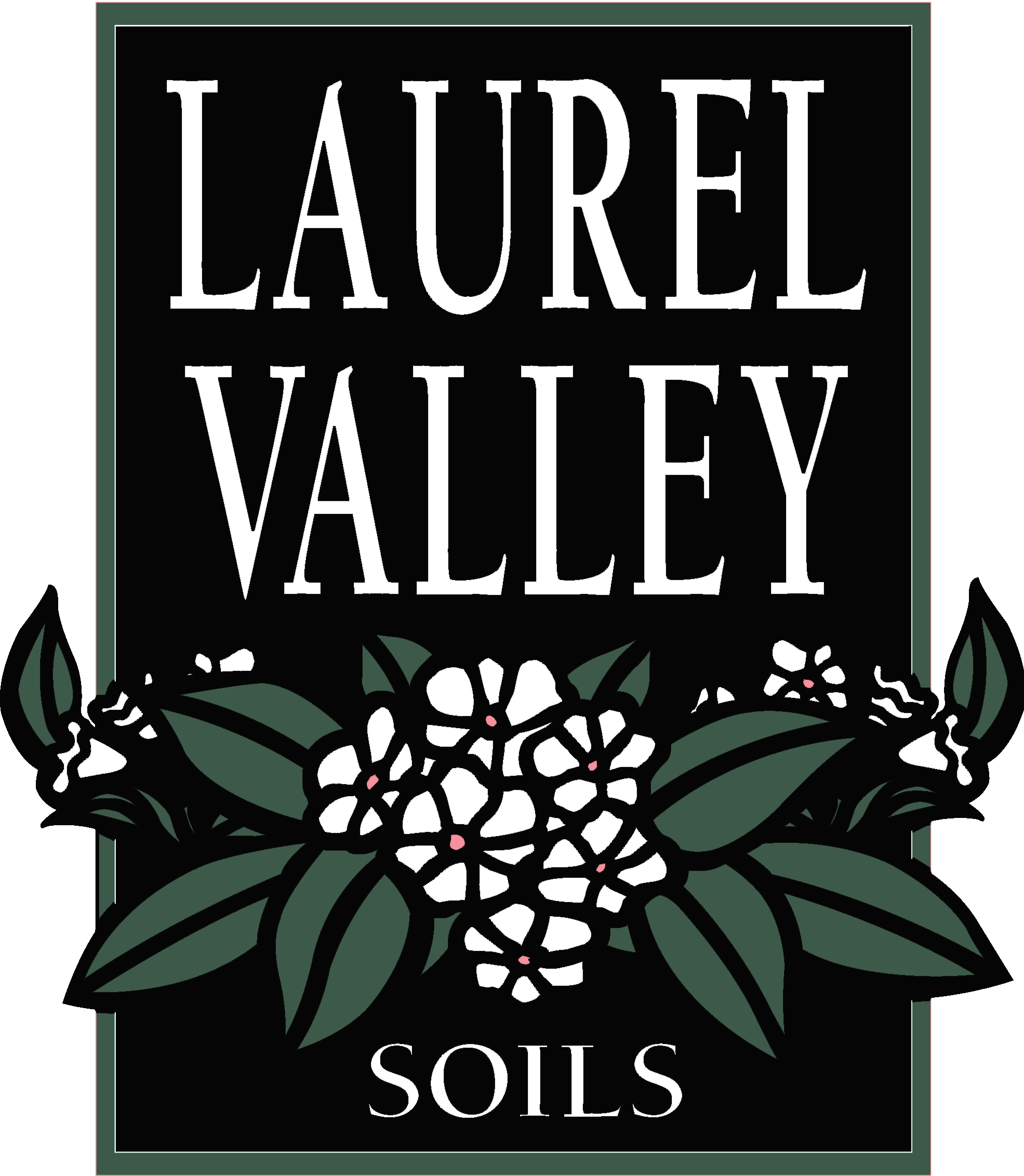
If you arrived home to find a ruptured pipe which had gushed 1246 gallons of water on to your floor (enough to fill 31 bathtubs), you would certainly be alarmed about the damage it caused.
But what if that 1246 gallons of water gushed off the impervious surfaces on your property (the roof, driveway, patio, etc.) and into your landscape, your neighbor’s yard or out onto the street? You may not worry about it if your neighborhood has not historically been at risk for flooding.
More often than not, however, we DO need to worry about it. Below is a great illustration which shows where rain travels in a typical landscape. Most stormwater that falls onto our properties is not typically absorbed where it falls. In fact, the rushing water from many houses in the neighborhood will combine, creating an escalated risk of surface flash flooding. This problem often becomes magnified as the stormwater travels further down through the watershed, carrying all types of pollutants (fertilizer, motor oil, animal waste, etc.) onto our streets and into our sewers, creeks, rivers, bays and ultimately our oceans.

It is important for all of us, as professionals in the green industry and homeowners, to understand how we can help reduce runoff by slowing stormwater down and capturing it in place so it can soak in naturally where the soil can filter and clean the water.
Almost every day when we turn on the news, we are seeing firsthand how catastrophic flooding is destroying neighborhoods, farmland and industry in places that have never traditionally been at flood risk, right here in the USA! Excessive rainfall is definitely alarming and is a new reality that needs to be accounted for. While climate change is a huge part of the problem, another contributing factor is the rapidly expanding amount of impervious surfaces spurred by economic growth. These two things, when combined, create chaos. While mitigating climate change will take time, there are easy and quickly implementable solutions we can do right now to counteract the displacement effects of impervious surfaces.
At Laurel Valley Soils we have traditionally considered our work to be strictly horticultural related, providing soils and compost for farms and landscapes. Now however, we find ourselves on the front lines of stormwater management. Many of our new products are designed to mitigate storm water runoff, such as our rain garden soil, Bio-retention soil and structural soils.

However, we cannot forget the benefits that our cornerstone product – compost – provides. Did you know that for every 1% increase in organic matter, a cubic foot of soil holds an additional 1.5 quarts of water?

This new field of stormwater management really excites us, and we were thrilled to kick off 2020 by attending a landscaping/grounds maintenance conference which for the first time offered sessions focused on stormwater management techniques.

For homeowners and contractors who want to learn more, Penn State Extension has a wealth of information available to help you confidently offer products and services that improve stormwater management for your customers, employers, municipalities, or your own properties.
Below are links to a few short videos provided by Penn State Extension about what is stormwater https://extension.psu.edu/what-is-stormwater and why we should care about it: https://extension.psu.edu/why-should-i-care-about-stormwater.
Want to see some great examples of beautiful and creative stormwater management projects? Here you go! https://greenbuildingunited.org/uploads/attachments/cjhhv57qy0ylrnku0m701qg4i-exceeding-intent.pdf
Of course, you can always reach out to Jake with any questions!

